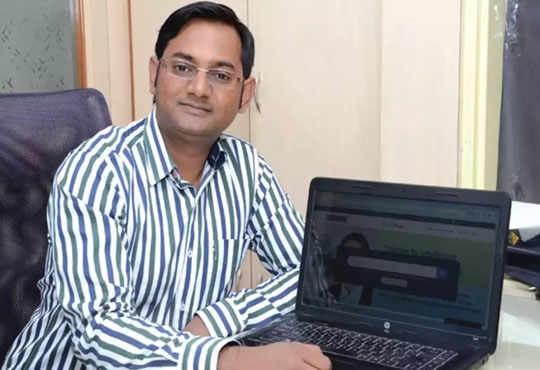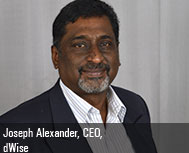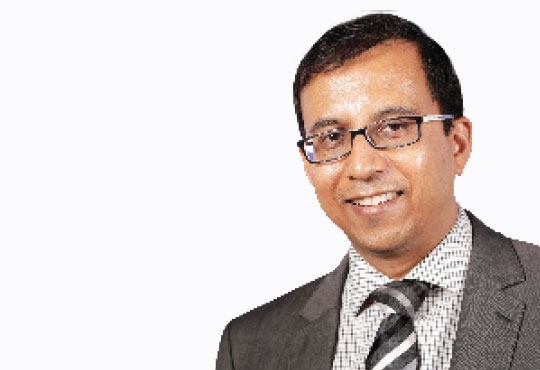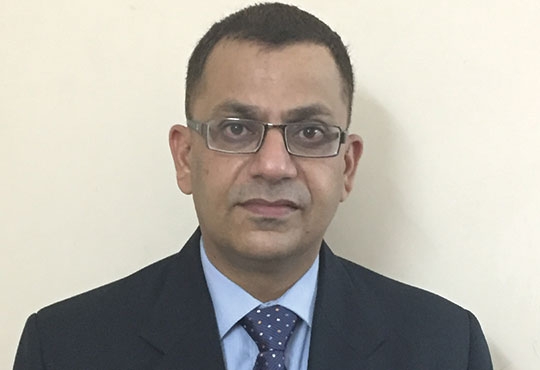
CIOTechOutlook >> Magazine >> June - 2016 issue
dWise Healthcare: GIVING HEALTHCARE INDUSTRY AN OVERHAUL
By
 The Beginning
The BeginningBangalore based dWise Healthcare's foray into Healthcare IT started way back in 2010, with the passing of a legislation called “Meaningful Use of IT in Healthcare Bill” which is popularly known as ‘Meaningful Use Bill’ or ‘MU’ in the United States (US). The bill has mandated that all Healthcare IT vendors should move from the paradigm of EMR (Electronic Medical Records) to EHR (Electronic Health Records). While the large hospitals could afford to implement products from established players with Certified EHR, the small and rural Hospitals could not afford such products. This segment had over 6,250 hospitals in the US and remained unaddressed.
dWise grabbed the opportunity, along with a group of American healthcare professionals and built a HIS (Hospital Information system) with EHR (Electronic Health Records - Clinical Workflows of the Hospital) and got its ‘Complete In-Patient’ Certification in January 2011 and deployed it in five Hospitals in the USA by May 2011 and eventually went on a roll from there on.
“Our first Meaningful Use Certification from ONC (Office of the National Coordinator for Healthcare IT) was a record of sorts. It was the first multi-tenant cloud based SaaS platform with an ONC Certification and we were the only Indian Company with an ‘In-Patient Meaningful Use Certification’. This was achieved in ‘one session’ of certification and with a ‘single product’. There were about 20 Companies at that point in time that had ‘Complete In-Patient’ Certification, all of them with presence in the Healthcare vertical in the US for decades. Most of these vendors received their Complete In-Patient Certification across ‘multiple sessions’ of certification and ‘multiple products’,” says Joseph Alexander, CEO of dWise Healthcare.
Joseph continues, “Our success in the US market was mainly to do with how we architected the platform, without being influenced by any of the popular existing products in that market. The architecture of a ‘Single Product’ catering to the entire clinical workflows with over 35 clinician roles in a hospital and keeping all the workflows patient centric, gave a totally fresh approach on how HIS Systems are deployed and used, thus improving operational efficiency, patient engagement and satisfaction. Our ‘single product’ approach had very high acceptance and adoption in that market.”
The Indian Foray
dWise Healthcare launched its Lifetrenz EHR platform for the Indian Market in early 2013, and the product is fully compliant to the ‘HIT & EHR' standards approved by the Ministry of Health & Family Welfare, Government of India.
Wing Commander CK Babu (Retd.), the Chief Operating Officer at dWise Healthcare says, “While we incorporated all the best practices we learnt in the US into our Indian Platform, we ensured it was built from the ground up and kept completely configurable to suit Indian clinical workflows. We altogether built a new product for the Indian Market, on a different technology stack, to keep the cost of licensing low in the country.” Babu continues, “Though 90 percent of the Healthcare IT Spend in the world is in the US, whereas India has just a fraction of this spend, we took the plunge in the Indian Market looking at the future. We took initiative to be the first movers and establish ourselves early as the only Standards compliant EHR Vendor for Clinical Workflows in Hospitals.”
Dr. Pramod Jacob, the Chief Medical Officer of dWise Healthcare says, “The biggest challenge dWise faced when we wanted to enter the Indian market with an EHR platform was the lack of a good ‘Drug Information Framework and Knowledge base’ for the Indian market, similar to ‘First Databank (FDB)’ available in the US, without which you cannot build a ‘Clinical Decision Support System (CDSS)’, which is an essential part of a good EHR Platform. We had to take it on ourselves to build a ‘Drug Framework’ and ‘CDSS Engine’ based on Indian Pharmacopeia and we are proud to say that we have built the first and only one of its kind Drug Information Framework & CDSS engine, covering more than 1,10,000 packaged drugs sold in this country. It is on this strong foundation that our EHR platform resides.”
Building the team and domain
“We believe in hiring only freshers and investing on training and grooming them into outstanding engineers. We have perfected this model across the eight years in operation and created over 500 first jobs for young engineers. This model has helped us build a highly productive team and great products at very competitive costs.” Says Joseph Alexander.
“Our training program for young engineers is not limited to technology, tools and soft skills; we also invest heavily on Healthcare Domain knowledge. We have a team of Clinicians including Doctors, Senior Nurses and Pharmacists, not only to train our internal team but also our customers. Our exposure in the US taught us that training and adoption is most effective if IT/Product training for clinicians is conducted by clinicians.” says Dr Pramod Jacob.
“Our Internal research on lack of Doctors’ adoption to Healthcare IT showed that the primary cause of low adoption amongst Doctors had to do with ‘Usability and Accountability’. We solved these two primary issues in our products to achieve high adoption amongst Doctors by focusing on Usability using ‘machine learning’ and ‘predictive analytics’, with the doctor having to type in minimally and managing a consult with a few clicks, which is faster than using pen and paper. Furthermore, by bringing in all the other clinical roles as part of the workflow on our product, whereby every clinical role becomes as accountable as the doctors, we solved the problem of Doctors’ resistance on use of Healthcare IT products because accountability was limited to them,” says Dr. Pramod Jacob.
Lifetrenz EHR Platform
The Lifetrenz EHR Platform caters to the needs of the entire spectrum of healthcare delivery eco system, with products for Primary Care (General Practice, Group Practice and Day-care centres), Secondary and Tertiary care Hospitals, Labs, Radiology and Imaging centers and Pharmacies, that are built on the strong foundation of compliance to international and Indian EHR Standards, ‘Clinical Decision Support Engine’ and ‘Drug Information Framework & Knowledge base’.
“For the Hospitals we have a suite of products - ‘HIS – Hospital information System’, handling all their finance, administration and operational processes, ‘EHR – Electronic Health Records System’, handling all their Clinical Workflows and Patient Health Records and a ‘Hospital ERP –Enterprise Resource Planning’, handling all Accounts, Inventory, Purchase, Asset management, HR and Pay Roll management. We also have advanced products such as ‘Command Central’ which helps a chain of Hospitals centrally manage all their sites and ‘Trendz - Analytics tool’ which provides them an analytics Dashboard and tool to measure Financial, Operational and Clinical efficiency. On our road map we also have a ‘Patient Lifecycle Management Tool’ under development,” says Sandeep Raizada, CTO at dWise Healthcare.
Lifetrenz is also launching its new Primary Care platform, which has been architected holistically to meet the needs of the vastly unorganized primary healthcare care segment in the country. The platform provides all registered allopathic doctors in the country a Practice Management System with EHR for management of their clinics and health records of their patients, apart from marketing their appointments on a patient portal, absolutely free of charge.
CXO Insights
Multiplying Opportunities In Big Data Analytics
By Diwakar Chittora, Founder & CEO, Intellipaat
Maximizing efficiency and reducing spend in IT...
By Anindo Ganguly, AVP and Head, IT Infrastructure Practice, Sasken Communication Technologies
How Safe is Your Customer Information?




